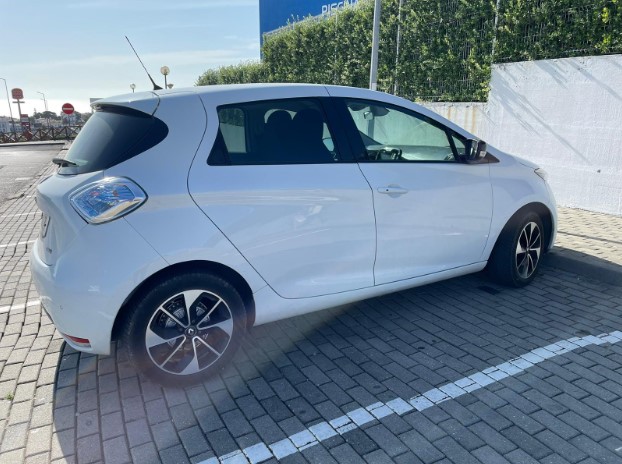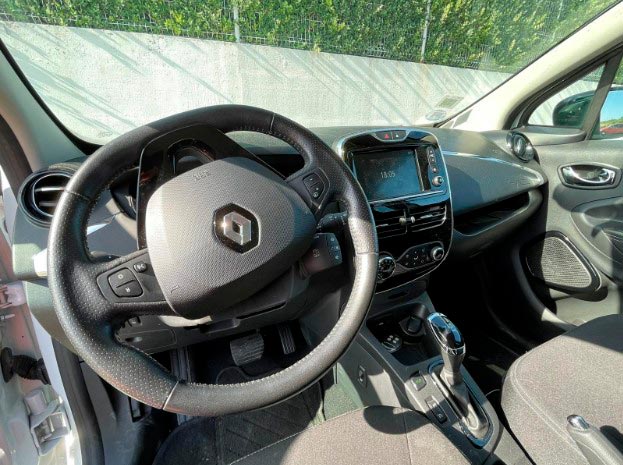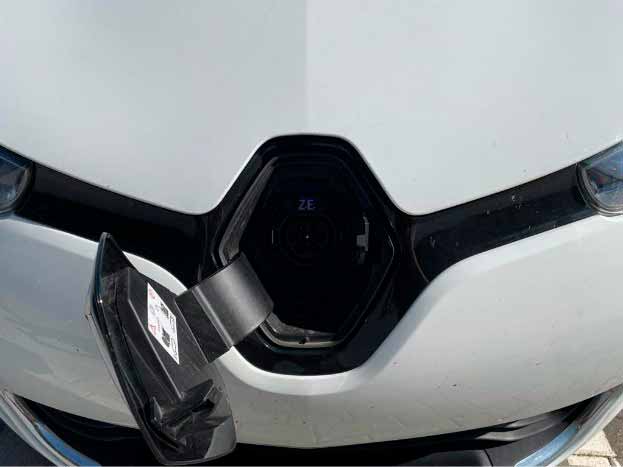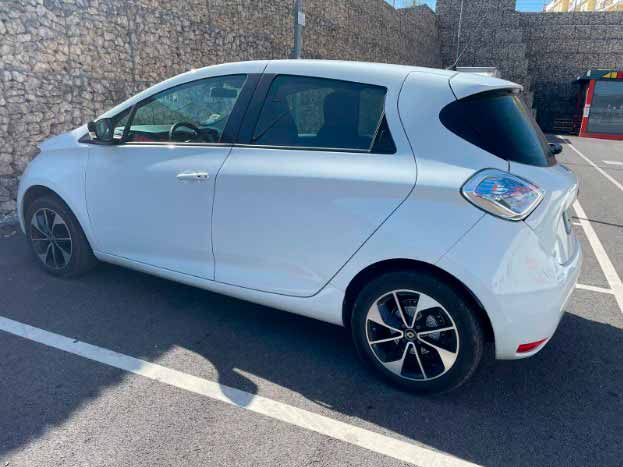
Electric vehicles are becoming more and more popular. People seek cleaner and more sustainable ways to travel and EVs are the way to go. The market is also booming. The choices are always evolving and it may feel daunting to dive into this world while feeling the pressure to make the right choice.
If you’re looking to buy an entry-level EV, surely you will have come across two of the most widely-sold models. I’m talking about the Renault Zoe and the Nissan Leaf.
In this article, I will compare the Zoe to the Leaf. My goal is to provide a comprehensive comparison of these vehicles for 2023. I will focus on performance, range, interior design, charging, safety, and cost.
I will explore the differences and similarities between the Renault Zoe and the Nissan Leaf. It will help you make an informed decision when it comes to choosing the right car for you.
In this article, I will cover the following sections:
- Performance and Range
- Interior, Comfort, and Technology
- Charging Infrastructure and Convenience
- Safety and Advanced Driver-Assistance Systems (ADAS)
- Pricing, Value, and Ownership Costs
Full disclosure: I have a Renault Zoe, and I am happy with it. But this doesn’t mean I’m biased! It means that I’ll take you through the comparison I made a year ago when I bought my car.
I will be updating that research though, as the Nissan Leaf has released a new model in the meantime. The models I’ll be comparing in this article are the Renault Zoe ZE 50, first released in 2019, and the 2023 version of the Nissan Leaf.
Performance and Range
When it comes to performance, both the Renault Zoe ZE 50 and the latest Nissan Leaf are good options. Let’s compare their characteristics, including acceleration, top speed, and range.
In terms of acceleration, both the Renault Zoe and the Nissan Leaf deliver impressive responsiveness.
The Renault Zoe 2019 version has two models: the R110 and the R135. The R110 has a power of 108 horsepower (hp) and can go from 0 to 62 miles per hour (mph) in 11.4 seconds. The R135 has a power of 135 hp and can go from 0 to 62 mph in 9.5 seconds. The maximum speed of both models is 87 mph.
The Nissan Leaf 2023 version also has two models: the 40kWh and the 62kWh (e+). The 40kWh has a power of 150 hp and can go from 0 to 62 mph in 7.9 seconds. The 62kWh (e+) has a power of 217 hp and can go from 0 to 62 mph in 6.9 seconds. The maximum speed of both models is 90 mph.
You can see that the Nissan Leaf is faster and more powerful than the Renault Zoe, especially on the e+ model. The Leaf can accelerate quicker and reach a slightly higher speed than the Zoe.
But the Zoe is still fast and agile for a small car. It also drives well and easily in the city and on curvy roads. The Leaf also drives nicely, but it is heavier and bigger than the Zoe, so it may feel less nimble.
Now, let’s discuss a critical factor for anyone owning an electric vehicle: the driving range.
The Renault Zoe ZE 50 has a 52 kWh battery that gives it an official range of up to 239 miles on the WLTP combined test cycle, which is impressive for a small car.
The Nissan Leaf S Plus has a larger 60 kWh battery that gives it a range of up to 226 miles. This is slightly less than the Zoe ZE 50 but still adequate for most drivers. The Nissan Leaf S and SV models have a smaller 40 kWh battery that gives them a range of 150 miles. This is comparable to the older-generation Zoe models with a 41 kWh battery.
Any of the ranges mentioned may vary depending on factors such as speed, driving style, topography, and weather conditions. Also, generally, the range is smaller in highway driving and higher in urban drivin.
Interior, Comfort, and Technology
The Renault Zoe ZE 50 and the 2023 Nissan Leaf offer different levels of interior quality, comfort, and technology features. In this section, I will compare their cabins and equipment.
The Renault Zoe ZE 50 has a stylish and modern interior that uses recycled materials for the upholstery and trim. A 9.3-inch portrait touchscreen dominates the dashboard, as you can see in this video:
This is where you can control the EasyLink infotainment system, which supports Apple CarPlay and Android Auto.
The digital cluster is 10 inches in size and displays information such as speed, range, navigation, and driving modes.
The Zoe ZE 50 also comes with many features. These include automatic climate control, wireless phone charging, heated front seats and steering wheel, keyless entry, cruise control, blind-spot monitoring, lane-keep assist, rear parking sensors and camera, and more.
However, some features are optional or only available on higher trims. This is the case with 17-inch alloy wheels, LED headlights, leather upholstery, and 50 kW DC rapid charging capability.
The 2023 Nissan Leaf has a more conventional and spacious interior.
The best thing about it: it offers more head and leg room for the passengers.
The Leaf’s dashboard features an 8-inch touchscreen that runs the NissanConnect infotainment system. It also supports Apple CarPlay and Android Auto. The cluster is a combination of analog gauges and a 7-inch digital display that shows similar information as the Zoe ZE 50.
The Leaf also comes with automatic climate control, heated front seats and steering wheel, keyless entry, adaptive cruise control, lane-departure warning, forward-collision warning, rear cross-traffic alert, rear parking sensors and camera, and more.
Some features are also optional or only available on higher trims. These are, for example, the LED headlights, leather upholstery, Bose premium sound system, ProPilot Assist semi-autonomous driving system, and a 360-degree camera.
Both cars have a similar amount of cargo space, with the Zoe ZE 50 offering 23.6 cubic feet behind the rear seats. It increases to 30 cubic feet when you fold down the seats. You can read our article to learn how to remove the rear seats altogether, in case you need even more space.
The Leaf has pretty much the same capacity, but in a different shape, with a lower loading lip.
The two cars have different features when it comes to their interior design, comfort, and technology features. They’re both strong in some aspects and less strong in others, so it really comes down to what you value the most. What is it for you?

Charging Infrastructure and Convenience
The Renault Zoe ZE 50 and the 2023 Nissan Leaf have different charging options and speeds. In this section, I will compare their charging characteristics and convenience.
The Zoe ZE 50 has a Type 2 connector that allows it to charge at up to 22 kW on AC (Alternating Current) charging stations. These are the ones you find at work or in public locations. This means that it can fully charge its 52 kWh battery in about 3 hours on a 22 kW charging station.
However, there is an optional feature on the higher trims. A CCS Combo connector that allows it to charge at up to 50 kW on DC (Direct Current) rapid charging stations, such as those found on highways. This means that it can recover 150 kilometers of range in 30 minutes on a rapid charging station.
Now let’s talk about the 2023 Nissan Leaf. It also has a CCS Combo connector that allows it to charge at up to 46 kW on DC rapid charging stations. This means that it can recover 97 miles of range in 30 minutes on a rapid charging station. The Leaf also has a Type 2 connector that allows it to charge at up to 6.6 kW on AC charging stations. This means that it can fully charge its 40 kWh or 60 kWh battery in about 6 hours or 9 hours, respectively, on a 6.6 kW charging station. Note that some features are also optional or only available on higher trims.
Both cars can also charge at home using a standard domestic socket, a reinforced Green’Up socket, or a wall box. Remember that the charging time and power vary depending on the type of socket and the car’s charger.
The Renault Zoe ZE 50 has a Cameleon charger that can charge at up to 7.4 kW on a single-phase wall box or up to 22 kW on a three-phase wall box. The Nissan Leaf has a charger that can charge at up to 3 kW on a single-phase wall box or up to 6.6 kW on a three-phase wall box.
The Renault Zoe ZE 50 and the 2023 Nissan Leaf have different charging options and speeds. The Zoe ZE 50 has an advantage over the Leaf in that it can charge faster on AC charging stations (up to 22 kW vs up to 6.6 kW). On the other hand, the Leaf has an advantage over the Zoe ZE 50 in that it can use DC rapid chargers as standard (up to 46 kW vs optional up to 50 kW).

Safety and Advanced Driver-Assistance Systems (ADAS)
How do the Renault Zoe ZE 50 and the 2023 Nissan Leaf compare in terms of safety and Advanced Driver-Assistance Systems (ADAS)? Let’s find out.
The Renault Zoe ZE 50 received a zero-star rating from Euro NCAP in 2021. This was a shocking result for a car that had achieved five stars in 2013. The main reason for this poor rating was the lack of a head-protection airbag and some essential ADAS features. These lacking features include lane-departure warning and autonomous emergency braking (AEB).
The Zoe ZE 50 also performed poorly in some crash tests, especially the side pole test, where the driver’s head directly impacted the intruding pole. Renault responded to this criticism by making lane-departure warning and AEB standard on all Zoe ZE 50 models from January 2022. But a head-protection airbag is still not offered as of 2023.
The 2023 Nissan Leaf has not been tested by Euro NCAP yet. But its previous version received a five-star rating in 2018. It scored well in adult and child occupant protection, vulnerable road user protection, and safety assistance.
The Leaf also comes with more ADAS features than the Zoe ZE 50. These include adaptive cruise control, lane-departure warning, forward-collision warning, rear cross-traffic alert, and rear parking sensors and camera. Some features are optional or only available on higher trims.
Both cars have some standard safety features. These include six airbags (except for head-protection airbag on the Zoe ZE 50), electronic stability control, anti-lock braking system, tire pressure monitoring system, and ISOFIX child seat anchors.
In conclusion, the Zoe ZE 50 has a zero-star rating from Euro NCAP in 2021, which is worrying for a modern car. The Leaf has a five-star rating from Euro NCAP in 2018, which is more reassuring.
Exterior — Let’s Talk About the Looks
Some people value only the features the car offers, disregarding its appearance. I’m not one of those people. When choosing my EV, I still did extensive research on the Leaf but ended up discarding it, a lot because of how it looks.
A year ago, when I bought my car, the 2023 didn’t exist yet. This new version looks nicer, but the previous ones are clear losers when compared to the Renault Zoe. In my opinion, of course.
The Renault Zoe ZE 50 has a compact and curvy design that resembles a conventional hatchback, such as the Renault Clio. It has a sleek front end with a large diamond logo that hides the charging port, LED headlights, and daytime running lights.
It has a rounded rear end with LED taillights. It has 15-inch or 16-inch alloy wheels, depending on the trim level. It also has various color options, such as Celadon Blue, Flame Red, Quartz White, and Titanium Grey.
The 2023 Nissan Leaf has a larger and more angular design that reflects its spacious nature. It has a sharp front end with a V-shaped grille. This includes the charging port, LED headlights and daytime running lights, and a large lower air intake. It also has various color options, such as Gun Metallic, Scarlet Ember, Glacier White, and Super Black.
Both cars have some exterior features that are common to electric cars. These include aerodynamic shapes, blue accents, and low-rolling-resistance tires. Both cars also have some exterior features that are optional or only available on higher trims.
As they say, beauty is in the eye of the beholder. So this section doesn’t have a winner, as this really depends on your personal taste.

Pricing, Value, and Ownership Costs
The Renault Zoe ZE 50 and the 2023 Nissan Leaf have different pricing depending on the market and the trim level. In this section, we will compare their costs.
The Renault Zoe ZE 50 has a starting price of €31,990 in Germany, £29,995 in the UK, and €25,690 in Portugal. These prices include the battery, which could be rented in previous versions of the car, but Renault has now discontinued that option.
The Zoe ZE 50 is available in four trim levels: Life, Zen, Intens, and Riviera. As usual, the higher trims offer more features and options, most of which we detailed above.
The 2023 Nissan Leaf has a starting price of €33,400 in Germany, £27,995 in the UK, and €29,900 in Portugal. These prices include the battery, which is not available for rent.
The Leaf is available in three trim levels: S Plus (60 kWh battery), S (40 kWh battery), and SV (40 kWh battery). Like the Zoe, the higher trims offer more features and options.
Both cars can benefit from various incentives and subsidies in different countries.
For example, there is a €9,000 environmental bonus in Germany, a £2,500 plug-in car grant in the UK, and a €4,000 eco-incentive in Portugal.
Both cars have low running costs compared to conventional cars, as they do not need fuel or oil changes. They also have low maintenance costs due to their simple electric motors and fewer moving parts.
However, they may have different warranty periods and conditions. These depend on the market and the manufacturer.
Conclusion
The Renault Zoe ZE 50 and the latest Nissan Leaf are impressive electric vehicles with unique features and capabilities.
In this article, we explored various aspects of these models. We looked at their performance, range, interior features, charging infrastructure, safety technologies, and ownership costs.
The Zoe ZE 50 has a longer range, a more stylish and eco-friendly interior, and a faster AC charging speed.
The Leaf has more power, more space and comfort, and more ADAS features for its class.
Both cars have low running and maintenance costs and similar cargo space.
I recommend you test drive both vehicles. Also, consult with local dealerships to make an informed decision that aligns with your lifestyle and budget. With the growing popularity of electric cars, the Zoe and the Leaf are strong contenders. Both will please any eco-conscious drivers seeking a reliable and sustainable driving experience.
I hope this was clear and informative, and that it has helped you form your decision. Between the Zoe and the Leaf, one thing is sure: you’ll have a great car, regardless of the one you pick.
Whatever your choice is, you can count on our articles! We are here to provide you with more detailed information about features and troubleshooting tips for any problems you may have.